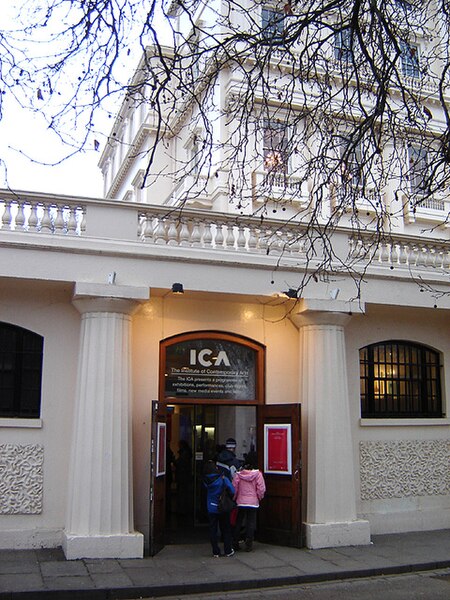Institute of Contemporary Arts
1947 establishments in EnglandArt museums and galleries in LondonArt museums established in 1947Arts centres in LondonBuildings and structures on The Mall, London ... and 7 more
Cinemas in LondonContemporary art galleries in LondonMuseums in the City of WestminsterPerforming arts in LondonTheatres in the City of WestminsterTourist attractions in the City of WestminsterUse British English from August 2015

The Institute of Contemporary Arts (ICA) is an artistic and cultural centre on The Mall in London, just off Trafalgar Square. Located within Nash House, part of Carlton House Terrace, near the Duke of York Steps and Admiralty Arch, the ICA contains galleries, a theatre, two cinemas, a bookshop and a bar. Stefan Kalmár became its director in 2016 and stepped down from this position in August 2021.
Excerpt from the Wikipedia article Institute of Contemporary Arts (License: CC BY-SA 3.0, Authors, Images).Institute of Contemporary Arts
The Mall, City of Westminster Covent Garden
Geographical coordinates (GPS) Address Website External links Nearby Places Show on map
Geographical coordinates (GPS)
| Latitude | Longitude |
|---|---|
| N 51.506608 ° | E -0.13061 ° |
Address
The Mall
SW1Y 5AH City of Westminster, Covent Garden
England, United Kingdom
Open on Google Maps











